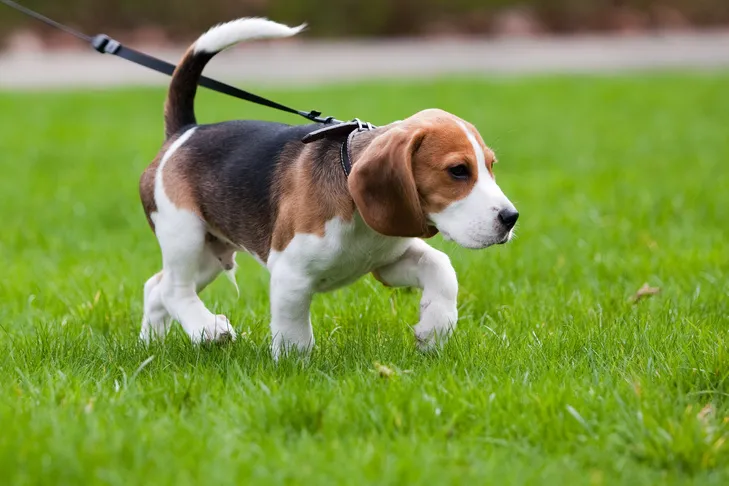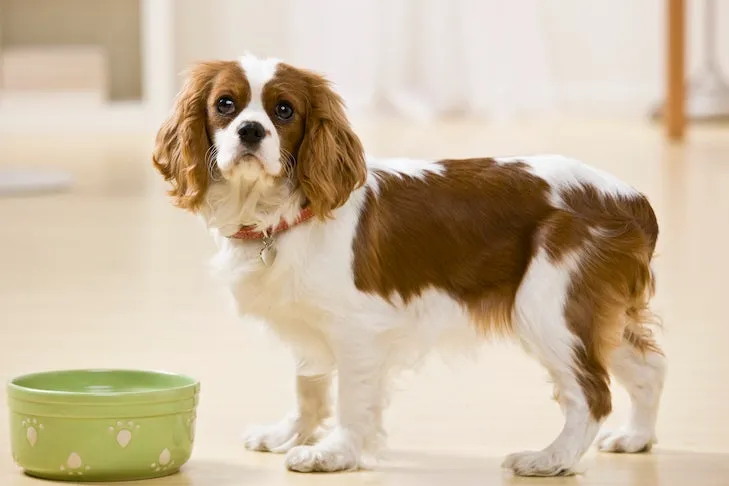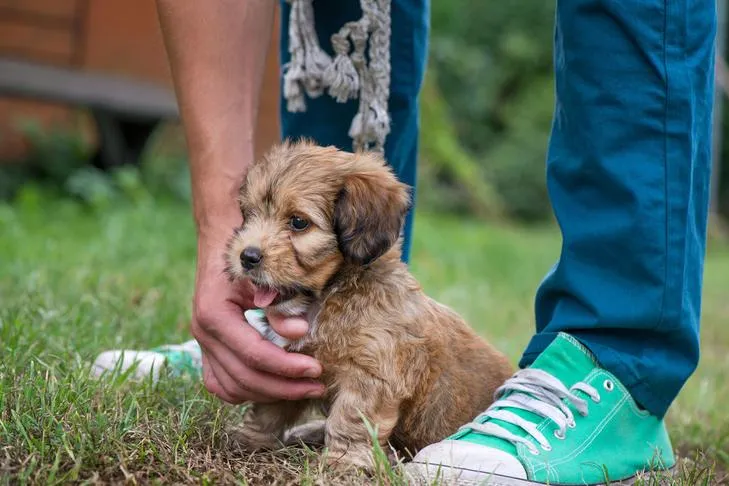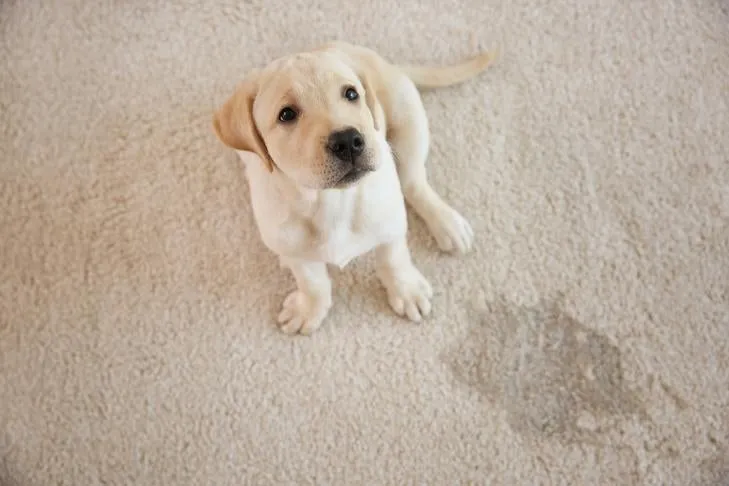Bringing a new puppy into your home is an exciting journey filled with joy, cuddles, and sometimes, a few accidents. Learning how to successfully potty train puppies at the right time and in the right places is one of the most critical foundational steps for a long, happy, and harmonious life together. Before your furry friend even crosses your threshold, it’s wise to consult a reliable Puppy Potty Training Book or comprehensive guide to research effective housetraining strategies, decide what best suits your lifestyle, and formulate a solid plan. A well-chosen book can be your invaluable companion, offering expert insights and step-by-step instructions to navigate this crucial phase. For more comprehensive resources on preparing for a new canine companion, consider exploring best books about raising a puppy.
Why Potty Training is Crucial: A Foundational Lesson from Your Potty Training Book
Any good puppy potty training book will emphasize that housetraining is not merely about preventing messes; it’s about establishing clear communication, fostering good behavior, and building a strong bond with your new pet. From teaching them their name to proper socialization and basic obedience, your puppy’s learning journey will seem endless. However, among these vital skills, housetraining should undoubtedly rank at the top of your priority list.
Successful potty training lays a vital foundation for a lifetime of good behavior. It helps your puppy understand routines, teaches them self-control, and most importantly, keeps your home clean and free from unwanted odors. By mastering this early challenge, you and your puppy will cultivate a positive relationship based on trust and understanding, setting the stage for all future training endeavors. Think of it as the first major chapter in your shared story, meticulously outlined in any effective puppy potty training book.
What a Great Puppy Potty Training Book Covers: Proven Methods for Success
A well-regarded puppy potty training book will present several tried-and-true methods for training your puppy, acknowledging that while each has its pros and cons, all can be highly successful with consistency and patience. According to experts like Mary Burch, Ph.D., director of the AKC’s Canine Good Citizen and S.T.A.R. Puppy programs, the key lies in understanding the principles behind each method and adapting them to your specific situation. These books often serve as practical handbooks, guiding you through the nuances of each technique.
Crates Rank High as a Potty Training Tool
Almost every authoritative puppy potty training book dedicates a significant section to crate training, and for good reason—dog crates genuinely simplify life for both you and your puppy. It’s highly recommended to acclimate your dog to a crate early on, not just for potty training, but also for safe vet visits, comfortable travel, and providing a secure den. Dogs are naturally den animals, seeking small, enclosed spaces for security and rest, making it relatively easy to teach your dog to love their crate.
The core principle behind using a crate for housetraining, as detailed in many guides, is a dog’s natural inclination for cleanliness. They instinctively avoid soiling their sleeping and living areas. Therefore, it’s paramount that the crate is the appropriate size – just large enough for your puppy to comfortably lie down, stand up, and turn around. If a crate is too spacious, a puppy might feel it’s acceptable to eliminate in one corner and then relax away from the mess. Many modern crates come equipped with adjustable partitions, allowing you to size the crate perfectly as your puppy grows, a feature often highlighted in a good puppy potty training book.
When the urge to eliminate strikes, a puppy will typically signal their need by whining, barking, or scratching at the crate door. This is their urgent plea to be let out of their den. Responding promptly is crucial. Allowing your puppy to lose control inside their crate teaches them that soiling their living space is acceptable, which can lead to indoor accidents becoming a habit outside the crate as well.
 Golden Retriever puppy looks guilty after a potty training accident on the carpet.
Golden Retriever puppy looks guilty after a potty training accident on the carpet.
Using Puppy Pads and Paper Training
While ideal scenarios involve puppies learning to hold their bladder indoors and only eliminating in designated outdoor spots, a comprehensive puppy potty training book will also address alternative methods like puppy pads and paper training. Dr. Burch notes that these methods can be “tricky” because “you’re reinforcing two different options for the puppy.” However, for certain situations, they become indispensable. For instance, individuals with demanding jobs that prevent frequent outdoor trips, or owners of tiny breeds in areas with harsh winters, might find puppy pads a practical solution.
Puppy pads offer a sanctioned indoor spot for relief, and there are even specialized indoor dog potties designed for male dogs. After a puppy matures and becomes more capable of holding their bladder, owners can then gradually transition to exclusive outdoor elimination. This flexibility and problem-solving approach are key aspects often covered in a detailed guide, like a reputable puppy potty training book.
Building a Housetraining Schedule: A Key Chapter in Any Good Book
Consistency is the cornerstone of successful housetraining, a principle vigorously stressed in every puppy potty training book. Puppies possess small bladders and rapid digestive systems, meaning they need frequent opportunities to relieve themselves. Establishing and rigidly adhering to a consistent schedule is paramount to teaching your puppy the right habits.
A useful guideline often cited in puppy care literature is that puppies can generally control their bladders for approximately the number of hours corresponding to their age in months, up to about 9-12 months. So, a 6-month-old puppy might reasonably hold it for about 6 hours. However, remember that expecting a puppy to hold it for 10 to 12 hours is a long stretch for anyone! Always bear in mind that every puppy is an individual, and their timing and needs will vary. A good puppy potty training book emphasizes observing your puppy’s unique rhythms.
When designing your schedule, monitor daily events and your puppy’s specific habits. For very young puppies, your schedule should include trips outside (or to a designated pad) at these crucial times:
- First thing in the morning and the very last thing at night.
- Immediately after active play sessions indoors.
- Upon waking up from any nap or after spending time in their crate.
- After chewing on a toy or bone, and certainly after eating or drinking.
Adhering to this rigorous schedule could mean taking your puppy out a dozen or more times within a 24-hour period. If you work outside the home, it’s essential to make arrangements, perhaps hiring a trusted dog walker or enlisting a friend to ensure your puppy maintains this crucial routine. The sooner you instill the understanding that there’s an approved potty spot and certain areas are strictly off-limits, the quicker you can move past the messy initial phase. For more detailed instructions on creating routines, consider guides like puppy raising made easy.
 Beagle puppy on a leash walking confidently in green grass, mastering outdoor potty training.
Beagle puppy on a leash walking confidently in green grass, mastering outdoor potty training.
The Book’s Guide to Observing and Supervising Your Puppy
A thorough puppy potty training book will always highlight the importance of vigilant observation and supervision. You must watch your puppy closely to discern their individual signals and rhythms. Some puppies might demonstrate greater bladder control, while others may need to go out almost every time they play or become excited. You might even observe some puppies pausing mid-play to relieve themselves before resuming their games. Just like human babies, canine potty habits are highly unique and idiosyncratic, requiring an attentive eye from their caregivers. Consistent supervision allows you to preempt accidents and reinforce good habits at the precise moment they occur.
Diet Control: Essential Information from a Potty Training Book
Another critical aspect discussed in any comprehensive puppy potty training book is the impact of diet on housetraining. Puppies have immature digestive systems, meaning they cannot handle large quantities of food efficiently. Most experts recommend breaking up your puppy’s feeding schedule into three smaller meals spread throughout the day. Crucially, the food itself should be of the highest quality puppy food, and it’s vital to ensure it agrees with your puppy’s delicate system.
Regularly examining your dog’s stool is the most effective way for an owner to assess if their diet is suitable. If your puppy consistently produces bulky, loose, or particularly odorous stools, it’s likely time to consult your veterinarian. They might recommend safely transitioning to a new dog food. Overfeeding can also lead to diarrhea, which will undoubtedly complicate and prolong the housetraining process. Understanding these dietary principles, often found in a good puppy potty training book, can prevent many unnecessary accidents.
 Cavalier King Charles Spaniel puppy next to an empty food bowl, demonstrating the importance of a consistent feeding schedule for potty training.
Cavalier King Charles Spaniel puppy next to an empty food bowl, demonstrating the importance of a consistent feeding schedule for potty training.
Reinforcing Positive Behavior: Strategies from Your Potty Training Book
A core tenet of effective puppy training, heavily emphasized in any reliable puppy potty training book, is positive reinforcement. Scolding a puppy for soiling your rug, especially after the fact, is generally ineffective and can even be detrimental. Instead, praising a puppy for doing the right thing works best across all aspects of your life together. You want to make them feel like a little canine Einstein every time they successfully relieve themselves in the approved spot.
Be effusive and enthusiastic with your praise – cheer, clap, offer their favorite small, easy-to-digest treats. Let them know that no other accomplishment, ever, has been as momentous as this successful potty break. The immediate reward creates a powerful association between the act of eliminating in the right place and positive outcomes.
If your puppy has an accident indoors, Dr. Burch advises against making a fuss. Simply clean up the mess calmly. It is crucial to use a cleaner specifically designed to eliminate pet odors, as lingering scents can signal to your dog that the spot is still an acceptable place to go. Blot up liquids thoroughly before applying the cleaner.
If you catch your dog in the act of squatting to urinate or defecate indoors, gently pick them up without scolding and immediately rush them outside to their designated potty area. If they finish the job outdoors, shower them with praise and attention. Remember, when it comes to housetraining, prevention and consistent positive reinforcement are the most powerful tools in your arsenal, a lesson reinforced time and again in any helpful puppy potty training book.
 Happy puppy receives positive reinforcement during an outdoor potty training session in the grass.
Happy puppy receives positive reinforcement during an outdoor potty training session in the grass.
Troubleshooting Common Problems: Practical Advice from Your Potty Training Book
Even with the best guidance from a puppy potty training book and diligent efforts, housetraining doesn’t always go perfectly smoothly. Sometimes, unexpected issues arise. Dr. Burch points out that persistent house soiling can occasionally be a symptom of an underlying physical issue. “Well before the several month mark, a dog who has seemed impossible to housetrain should have a good veterinary workup,” she advises. If your vet confirms your dog is healthy, the next step would be to consult with a professional trainer or animal behaviorist experienced in these specific challenges. Good puppy potty training books will often include sections on how to identify when professional help is needed and where to find it.
Here are some common complaints and troubleshooting tips often addressed in training literature:
‘My Dog Is Piddling All Over the House!’
This issue is particularly common among owners of Toy breeds. Some trainers and puppy potty training books recommend teaching these smaller puppies to use indoor potty spots, similar to how a cat uses a litter box. Beyond traditional puppy pads, there are specialized dog potty boxes for indoor use. Trainers emphasize that with consistency and extra attention, even tiny dogs can be successfully housetrained, though it may require a bit more time and effort.
‘My Dog Keeps Peeing in the Same Spot Where They Had an Accident’
This problem usually indicates that the previous accident was not cleaned effectively. A lingering odor, undetectable to humans but very clear to a dog’s sensitive nose, signals that this spot is still a prime elimination area. Any thorough puppy potty training book will stress the importance of having ample pet stain enzymatic cleaners as part of your new puppy supply kit. Always follow the instructions carefully to completely neutralize the odor and prevent your puppy from returning to that spot.
 Yellow Labrador retriever puppy sits next to a cleaned pee accident on the carpet, emphasizing the need for proper odor elimination in puppy housetraining.
Yellow Labrador retriever puppy sits next to a cleaned pee accident on the carpet, emphasizing the need for proper odor elimination in puppy housetraining.
‘I Gave Them the Run of the Apartment. When I Came Home, There Was a Mess.’
This is a common mistake many new dog owners make. They observe early signs of progress, interpret them as complete understanding, and prematurely declare victory, granting their puppy too much freedom too soon. Even when your puppy seems to be consistently doing what you want, it’s crucial to maintain their structured schedule and supervision for an extended period to ensure good habits are deeply ingrained. A good puppy potty training book will guide you on how to gradually increase freedom responsibly.
‘They’re Soiling Their Crate!’
As Dr. Burch explains, rescued dogs, especially those from situations where they were confined for long periods without other options, may learn to soil their kennels. The most effective approach for these cases, often detailed in specialized puppy potty training books for rescued dogs, is to revert to square one with crate and housetraining. Here are the steps to follow:
- Assess Control: Carefully evaluate your dog’s ability to control their bladder and bowels when they are not in the crate.
- Diet and Schedule Control: Implement strict control over their diet and adhere rigorously to their potty schedule.
- Frequent Trips: Provide very frequent trips outside, including immediately after every meal, first thing in the morning, and last thing at night.
- Support System: If you work or will be away from home for extended periods, seriously consider hiring a dog walker or arranging for a trusted neighbor or friend to let your dog out.
- Thorough Cleaning: If an accident occurs, always clean the area meticulously to ensure no odors remain, as this can invite repeat behavior.
How Long Does Potty Training Take? What Your Book Won’t Tell You
The duration required for successful potty training can vary significantly, as Dr. Burch and many puppy potty training books acknowledge. Numerous factors come into play, including the puppy’s age, their previous learning history (if any), your chosen methods, and, crucially, your consistency. An 8-week-old puppy is developmentally very different from a 5-month-old puppy. Some puppies may exhibit perfect manners within just a few days, while others might take several months, particularly if they experienced less-than-ideal circumstances before joining your family.
However, with unwavering patience, persistence, and the informed guidance you can gain from a quality puppy potty training book, most dogs can and will learn. The journey might have its ups and downs, but the reward of a well-housetrained companion is invaluable.
Conclusion
Embarking on the journey of puppy potty training is a significant step toward a harmonious life with your new canine family member. While it requires dedication, patience, and consistency, the right resources, particularly a well-chosen puppy potty training book, can serve as your ultimate guide. These books distill expert knowledge into actionable steps, covering everything from proven training methods like crate and pad training to establishing a crucial schedule, observing your puppy’s unique cues, and managing their diet for optimal results. They also equip you with the strategies for positive reinforcement and troubleshooting common challenges.
By leveraging the wisdom found in a comprehensive puppy potty training book and applying these principles diligently, you’ll empower your puppy to learn good habits, keep your home clean, and solidify the loving bond you share. Remember, every puppy learns at their own pace, so celebrate successes, learn from setbacks, and always consult your veterinarian if you suspect an underlying health issue. For more advanced training tips, explore guides such as best dog training books for labs.
References
- American Kennel Club (AKC) – Expert Advice articles on puppy training and care.
- Burch, Mary, Ph.D. – Director of AKC’s Canine Good Citizen and S.T.A.R. Puppy programs.
